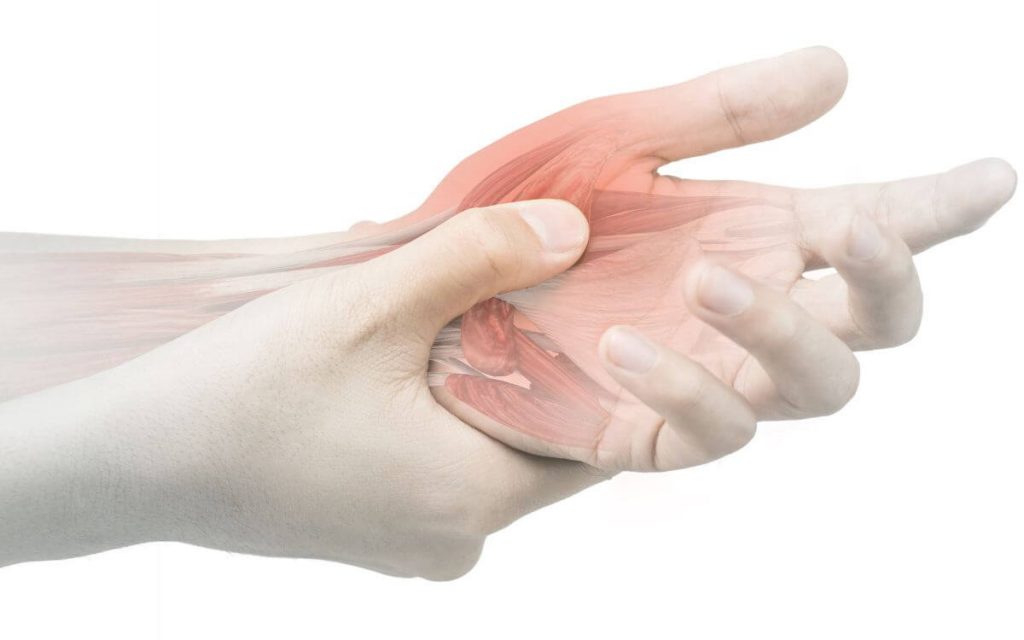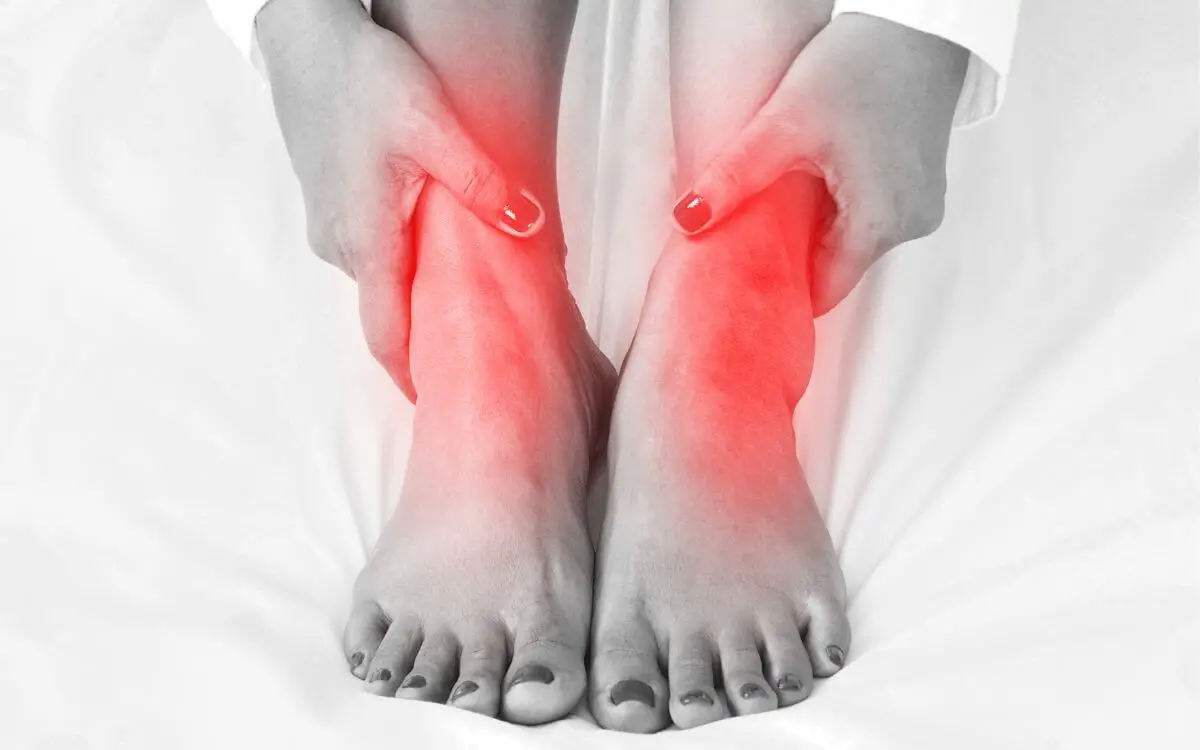Where are fibromyalgia pain points located?
Fibromyalgia is a chronic disorder that causes widespread musculoskeletal pain and tenderness. Muscles, ligaments, and tendons can be affected by this chronic condition. Fibromyalgia pain points, or tender points, are specific areas that are painful when pressure is applied.
Fibromyalgia has 18 different possible locations of pain points usually located on the neck, shoulders, chest, elbows, hips, knees, and lower back. The pain usually radiates outward from these sites to the other parts of the body.
What is fibromyalgia?
Fibromyalgia is a chronic disorder that causes widespread pain, tenderness, and chronic fatigue.
Fibromyalgia affects about 10 million people in the United States alone. Common symptoms of fibromyalgia syndrome include difficulty sleeping, sensitivity to loud noises, depression and anxiety, headaches, muscle stiffness, and joint pain. This is more than people with rheumatoid arthritis feel.
Rheumatoid arthritis is another condition that may cause tender points, though it can be difficult to differentiate between fibromyalgia and rheumatoid arthritis based on the location of tender points alone.
If you want to learn more about fibromyalgia, I wrote a “Fibromyalgia for Caring Partners” e-Book.
You can get the 3 First Chapters of the e-Book for FREE, and if you like it, you’ll get a Whopping 33% Discount on the Whole Book, plus discounts on other helpful tools. You have nothing to lose but a lot to gain.
These chapters alone explain how to accept the new normal, and understand fibromyalgia, and its diagnosis. They include:
- The new you.
- The new her.
- The new reality.
- Introduction to fibromyalgia.
- What is fibromyalgia?
- The early days.
- When you first realize something is wrong.
- Spotting the signs that something is wrong.
- Coming to terms with a chronic illness.
- The role of partner in fibromyalgia.
- The process of getting diagnosed.
Get Your 3 FREE Chapters!
Fibromyalgia for Caring Men

Fibromyalgia diagnosis?
The diagnosis of fibromyalgia is usually done by doctors through a physical exam and doctors review the patient’s medical history. Additionally, doctors may recommend other tests, such as blood tests, X-rays, and MRI scans to help rule out any underlying conditions.
For most people with fibromyalgia diagnosing fibromyalgia takes on average about 5 years from the onset of any symptoms as it is difficult to diagnose due to overlapping symptoms with other conditions.
In terms of diagnostic criteria, in order to officially be diagnosed with fibromyalgia, a patient must meet the tender points criteria, these symptoms people with fibromyalgia need to have at least three months.
What are fibromyalgia symptoms?
Common symptoms of fibromyalgia include muscle and joint pain, stiffness in connective tissues, fatigue, difficulty sleeping, headaches, sensitivity to loud noises, depression and anxiety, and cognitive issues like difficulty focusing.
Some patients may also experience irritable bowel syndrome (IBS) or fibromyalgia-associated pain in other parts of people’s bodies, and also cognitive symptoms like so-called “fibro fog” and memory problems. Sometimes sleep apnea, muscle spasms and similar symptoms occur when the nervous system is very active.
My wife’s healthcare provider wasn’t aware of these symptoms. Even though she felt pain, he didn’t recognize fibromyalgia. When such an unaware doctor presses on fibro points and you feel more pain than usual, he might not recognize these symptoms.
How can fibromyalgia be treated?
Doctors suggest that the main treatment for fibromyalgia should be medication, such as pain relievers, anti-inflammatory drugs, antidepressants, and muscle relaxants.
In addition to medication, to reduce pain, lifestyle changes can help the symptoms and relieve pain. This includes getting regular exercise and maintaining a healthy diet. You should avoid alcohol, avoid caffeine, and manage stress levels.
Additional therapies such as cognitive-behavioral therapy and mindfulness-based stress reduction can also be helpful in managing symptoms. Otherwise, massage therapy or other relaxation techniques along with a good exercise regimen.
Although fibromyalgia is a chronic condition, with proper treatment and lifestyle changes, it is possible to manage symptoms and lead a normal life. However, even before the diagnosis of fibromyalgia doctors delay the treatment not believing their patients, so the treatment takes time.
By understanding the cause of severe pain (after its diagnosis), it is possible to create a treatment plan that works best for an individual’s specific needs. Fibromyalgia can be a difficult condition to manage and it is important to learn how to recognize, identify, and manage fibro pain points to reduce the symptoms and improve quality of life.
Recent guidelines suggest that the best way to manage fibromyalgia pain is through a combination of lifestyle changes and medications.

What are fibromyalgia tender points?
Each of the fibromyalgia tender points is a specific area like joints or muscles that are sensitive when pressed, it is often very tender.
How do you find fibromyalgia tender points?
Fibromyalgia has 18 tender points that are typically found by applying gentle but firm pressure on certain parts. A doctor can help identify a tender point pain by using a special palpation method (touch) called “manual trigger point identification”, by pressing on an exact spot of sensitivity.
This method uses the light touch of the doctor to locate areas of tenderness or tightness in the muscles and other soft tissues.
Fibromyalgia tender points location.
The American College of Rheumatology has identified 18 different possible locations of tender points. However, many people with this condition do not experience all 18 locations of pain points.
It is important for individuals suffering from fibromyalgia to keep track of their tender points to better manage the condition. Common tender points can be found on both sides of the body and include:
- The base of the skull
- Upper back, near shoulder blades
- Chest (front and sides)
- Collarbone
- Joints in the elbows, hips, and knees
- Low back (both sides of the spine)
- Outer hips
- Thighs (both sides of the body)
Pressing on these tender pain points by a doctor without local anesthetic can be very uncomfortable, even painful for some individuals. It is important to remember that it is normal to feel discomfort at these specific points.
The base of the skull.
At the base of the skull is a common tender point pain. This tender point is located at the base of the neck, where the head meets the torso. Pressing can cause stiffness, headaches, and neck pain.
Upper back, near shoulder blades.
The upper back near the shoulder blades is another common point. Pressing here can cause stiffness, aching, and burning sensations in the upper back and neck, as well as headaches.
Chest (front and sides).
The chest area also has tender points. When pressed on the front or sides of the chest, it can cause sharp, stabbing pains that radiate throughout the body. It may also cause shortness of breath and difficulty moving around due to heightened sensitivity in this area.
Collarbone.
More tender points can be found on the collarbone. Pressing may lead to tenderness, gnawing pain, burning sensations, and general discomfort in this area of the body.

Joints in the elbows, hips, and knees.
The joints in the elbows, hips, and knees are also potential tender points. Pressure on any of these tender points can cause aching or sharp pains that can radiate throughout the body.
Additionally, it may make movement difficult due to heightened sensitivity in these areas.
Low back (both sides of the spine).
The low back is another common fibromyalgia tender point. Pressing here may lead to intense pain radiating through the lower back and buttocks. It may also affect mobility due to its tenderness in this area.
Outer hips.
The outer hips have more tender points. Pressure here often leads to discomfort and sharp pains radiating throughout the lower body. It may also cause difficulty in movement due to heightened sensitivity.
With other diseases like endometriosis, pelvic are can be especially sensitive and painful.
Thighs (both sides of the body).
The thighs have more tender points. Pressure here can lead to burning, aching sensations, and intense discomfort in this area of the body. Additionally, it may make normal daily activities difficult due to its tenderness.
Widespread pain index.
To further assess a person’s fibromyalgia symptoms, the American College of Rheumatology has introduced this chronic widespread pain index (WPI) scoring system. This new criteria scoring system has been approved specifically to assess the intensity and number of fibromyalgia pain points across the body.
This widespread pain index can help individuals identify their fibromyalgia tender points and develop an effective management plan to reduce the severity of symptoms. It can also be used to assess the effectiveness of certain treatments or medications.
Overall, tender points can be found in various areas of the body. It is important for individuals suffering from fibromyalgia to keep track of their symptoms. By tracking these areas, the doctor may help an individual identify trigger points so they can learn how to better cope with fibromyalgia.
Symptom severity scale.
The symptom severity scale (SSS) is another tool developed to assess fibro tender points and associated symptoms. This scale evaluates the severity of fatigue, chronic pain, and other symptoms of fibromyalgia on a scale from 0 to 10. The higher the score, the more severe the symptom.
Apart from tender points, this tool can help individuals better understand other symptoms and develop an effective management plan. It can also assess the effectiveness of certain treatments or medications.
Conclusion.
The diagnostic criteria for fibromyalgia require at least 11 out of 18 tender points. With the diagnosis, it is important for individuals suffering from fibromyalgia to identify their tender points to better manage their condition.
In order to diagnose fibromyalgia it takes an average of 5 years. The treatment requires various medications along with alternative therapies in order to conquer the symptoms, especially when people feel widespread pain continuously.


About Me
Hi, I’m Lucjan! The reason why I decided to create this blog was my beautiful wife, who experienced a lot of pain in life, but also the lack of information about endometriosis and fibromyalgia for men…
